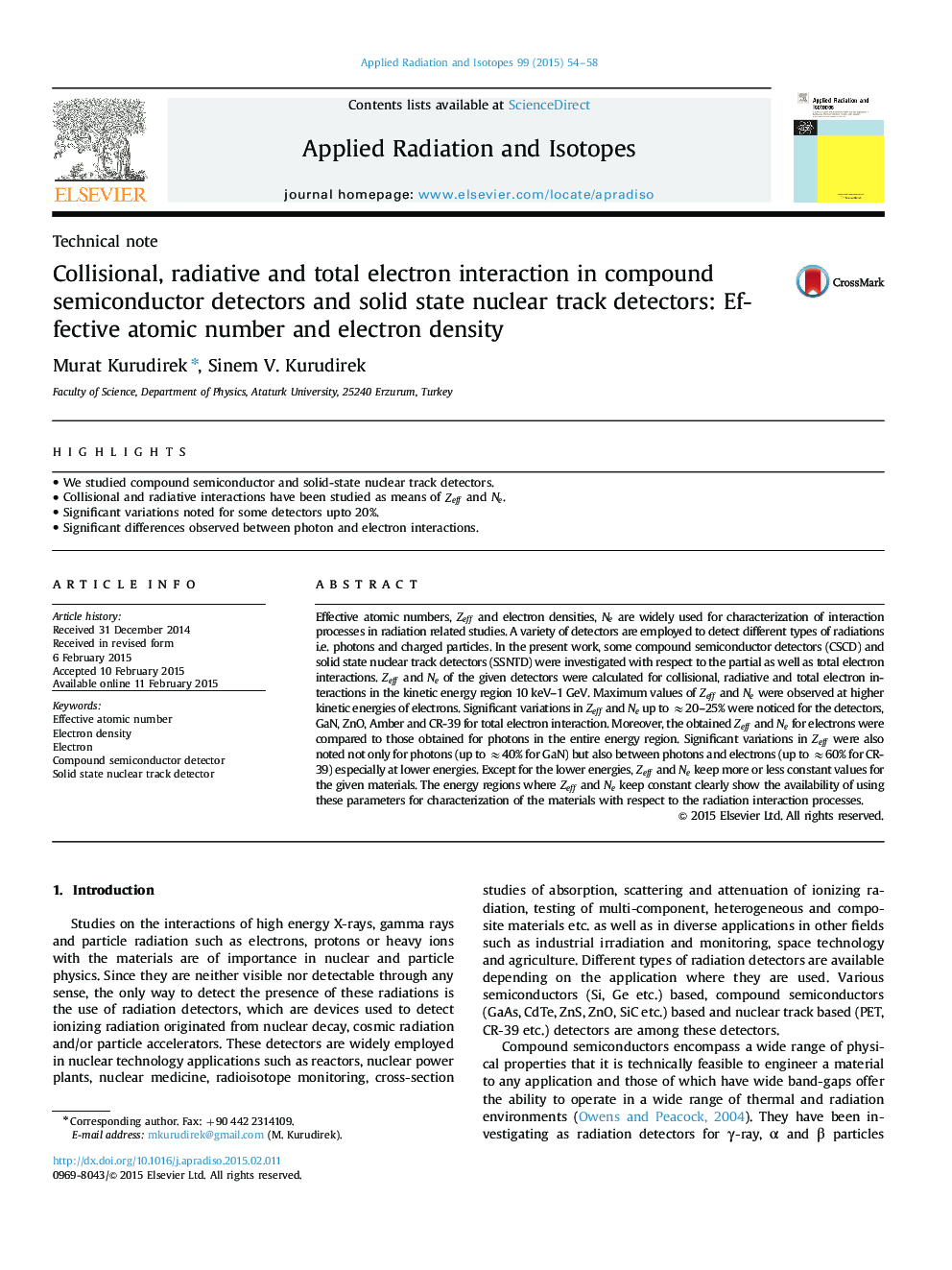| کد مقاله | کد نشریه | سال انتشار | مقاله انگلیسی | نسخه تمام متن |
|---|---|---|---|---|
| 1875767 | 1532098 | 2015 | 5 صفحه PDF | دانلود رایگان |
• We studied compound semiconductor and solid-state nuclear track detectors.
• Collisional and radiative interactions have been studied as means of ZeffZeff and NeNe.
• Significant variations noted for some detectors upto 20%.
• Significant differences observed between photon and electron interactions.
Effective atomic numbers, ZeffZeff and electron densities, NeNe are widely used for characterization of interaction processes in radiation related studies. A variety of detectors are employed to detect different types of radiations i.e. photons and charged particles. In the present work, some compound semiconductor detectors (CSCD) and solid state nuclear track detectors (SSNTD) were investigated with respect to the partial as well as total electron interactions. ZeffZeff and NeNe of the given detectors were calculated for collisional, radiative and total electron interactions in the kinetic energy region 10 keV–1 GeV. Maximum values of ZeffZeff and NeNe were observed at higher kinetic energies of electrons. Significant variations in ZeffZeff and NeNe up to ≈20–25% were noticed for the detectors, GaN, ZnO, Amber and CR-39 for total electron interaction. Moreover, the obtained ZeffZeff and NeNe for electrons were compared to those obtained for photons in the entire energy region. Significant variations in ZeffZeff were also noted not only for photons (up to ≈40% for GaN) but also between photons and electrons (up to ≈60% for CR-39) especially at lower energies. Except for the lower energies, ZeffZeff and NeNe keep more or less constant values for the given materials. The energy regions where ZeffZeff and NeNe keep constant clearly show the availability of using these parameters for characterization of the materials with respect to the radiation interaction processes.
Journal: Applied Radiation and Isotopes - Volume 99, May 2015, Pages 54–58
